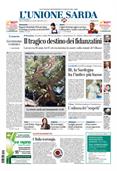"The genius of the Bastille", a novel that has the flavor of the classics
Jean Diwo and the history of France told through the saga of a Parisian family of wood artistsPer restare aggiornato entra nel nostro canale Whatsapp
Faubourg Saint-Antoine is one of the oldest and most important suburbs of Paris . It is a district steeped in history, which arose around the 12th century and is characterized by the presence of carpenters, furniture makers, cabinet makers and wood artists gathered around the Abbey of Saint Antoine . A community which, thanks to the protection of the various abbesses - the so-called ladies of the Faubourg - promoted the birth of a creative movement in wood and the affirmation of French furniture elevated to a work of art. Jean Diwo was born in this neighborhood in December 1914. For decades he was one of France's leading reporters and journalists. Then, when he turned seventy, in the mid-eighties of the twentieth century, he decided to devote himself to writing novels and to draw inspiration for his stories from the ancient events of the neighborhood where he was born. Thus was born the trilogy of the Ladies of the Faubourg , thanks to which Diwo, worthy heir to the great tradition of Dumas and Hugo, showed that he knew how to juggle skillfully in the historical novel, skilfully mixing truth and invention, real life characters and imaginary protagonists. Above all, he showed the ability to create lively plots, in which the great story was recalled with unusual lightness and a splash of healthy irony.
In short, the trilogy sold more than a million copies in France, was translated into many languages until arriving in Italy a couple of years ago, thanks to the publisher 21lettere. To begin with, " The Ladies of the Faubourg " (2021) was published, which tells the story of the Cottion-Thirion family, cabinetmakers of the Faubourg Saint-Antoine, and of France between 1471 and 1789. Then it was the turn of " The bed di acajou ” (2022) which continues the family saga of the Cottion-Thirion family and recounts the thirty years of the French Revolution and the Napoleonic epic. Finally, a few weeks ago the last volume of the trilogy, " The genius of the Bastille " (2023, pp. 768, also e-book) arrived in bookstores with which Diwo helps us retrace the adventure of the wood artists and of their families through their daily existence, the loves, tears, joys and shocks of the 19th century: the revolutions of 1830 and 1848, the economic boom of the Second French Empire, the war of 1870 between France and Prussia, the siege of Paris and the Commune, until the first woodworking machines appeared.
Finally, the enthusiasm and fears aroused by the novelties of the 20th century and the pains of the Great War are shared.
In the course of these exceptional events, the kingdom of furniture will lose some of its soul, but the incomparable skills of the Faubourg Saint-Antoine cabinetmakers will perpetuate a three-century-old supremacy by marrying the floral lyricism of Art Nouveau, the style of the Belle Époque and the modern decoration of the Art Deco.
